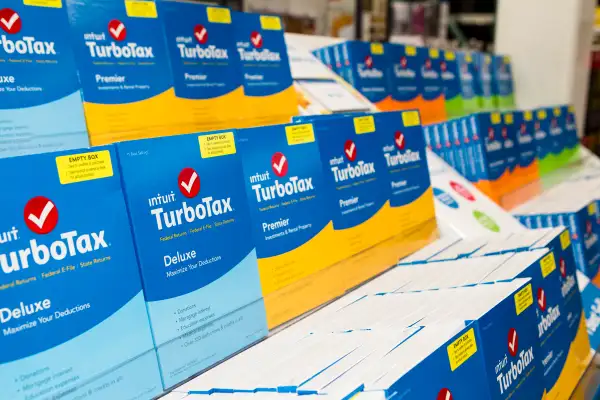2018 Tax Season: How to File Online

Learning how to file taxes is one of those life skills that seems more intimidating than it is. There are a slew of products and services — both free and paid — to help taxpayers master their W-2s and 1099s even if they’re not sure how to file taxes.
Where Do I Start If I Don’t Know How to File Taxes?
Fire up your computer. More than 90% of Americans file their tax returns digitally, and no wonder. There are several reasons deciding to file taxes online beats mailing in paper forms: You can wait until the last day to file taxes (although we don’t recommend procrastinating), you won’t have to stand in line at the post office, and you don’t have to manually enter all the figures and risk a math error that could cost you money. In many cases, you can also file for free. (The IRS says 70% of taxpayers are eligible to file taxes for free.)
When you file digitally, you have a few options: You can go directly to the site of a tax-prep service provider like TurboTax or TaxAct, or you can go to the I.R.S.’s taxpayer portal, where you can learn if you meet the criteria to be able to file taxes for free.
Can I File Taxes for Free?
If your adjusted gross income is less than $66,000, you can go through the I.R.S. Free File portal, which will give you an option of choosing one of the tax-prep companies that are part of the agency’s Free File Alliance.
If you earn more than that, the I.R.S. will provide you with free forms you can fill out, but you’ll have to put in more effort. The question basically boils down to, "How much work do you want to do? The work is more than just taking your W-2 into the software,” if you're hoping to file taxes for free, said Mark Steber, senior vice president and chief tax officer at Jackson Hewitt Tax Service. "You have to learn about the rules."
Using the I.R.S.'s forms might be free, but be prepared to crunch all the numbers yourself. It's also important that you know the ins and outs of what you can deduct and for which credits you might be eligible.
“We get a wide variety of questions on itemized deductions, on mortgage interest, home equity loans and lines of credit, a lot of questions about charitable contributions regarding documentation requirements,” said Gil Charney, director at The Tax Institute at H&R Block.
What Else Do I Need to Know About How to File Taxes Online?
Aside from going directly through the I.R.S., your other option is to file through a tax-prep service provider independent of the I.R.S. "Last season we processed about 40 million tax returns so we do have a lot of taxpayers who like doing taxes themselves," said Lisa Greene-Lewis, tax expert for TurboTax.
If you plan to file a simple form like a 1040A or 1040EZ — basically, if you don’t itemize, have kids, a mortgage, student loans or other deductible expenses — you might be able file your federal tax return for free through most major tax prep providers. In almost all cases, filing your state and federal tax returns with such a service generally costs under $100, or even less than $50.
Different providers have different cutoffs for who qualifies for free filing, and offer different types of support for D.I.Y. tax filing, so it pays to check out major brands like TaxAct, TurboTax, Jackson Hewitt, H&R Block and others for their offerings.
If you’re using a tax-prep firm’s services, you can download software from a tax-prep company’s site or a CD sold at major retailers, or you can do everything online.
Mark Jaeger, director of tax development at TaxAct, said that the ease of use and support you can access will be the same regardless of the method you choose, but he stressed that online filers have better data security. “When you use the CD or download version, this information is housed on your personal PC and could have greater vulnerability” to being accessed directly or through malware, he said. This isn’t necessarily a dealbreaker, but it does require greater vigilance in terms of making sure your antivirus software is up to date.
What Else Do I Need to Know About Filing Taxes Online?
Here are a few other tips tax experts suggest — and we’d suggest bookmarking this page so you have the information on hand, even if you wait until the last day to file taxes (which is April 17 this year, not April 15).
• Sign up for direct deposit to get your refund faster, Greene-Lewis of TurboTax advised. Electing to receive a check in the mail means you’ll have a longer wait. Also, your refund can’t be stolen out of your mailbox if it’s sent electronically.
• Beware of phishing and other scams. Unsolicited emails and lookalike websites are two ways identity thieves can trick you into divulging personal details they can use to steal your identity. The I.R.S. website is www.irs.gov — steer clear of sites that end in .com, .net, or any other suffix.
• If you think you will wind up waiting until the last day to file taxes — again, something we don’t really endorse, but we know sometimes life happens — try to at least do some minimal prep work ahead of time. Days or preferably weeks before the tax-filing deadline, take a look online at your tax-prep platform of choice or the I.R.S. site to make sure you have all the paperwork and documents you’ll need on hand and ready to go.
We’ve included affiliate links into this article. Click here to learn what those are.
